1936 Wheat Penny Value: How Much Is It Worth Today?
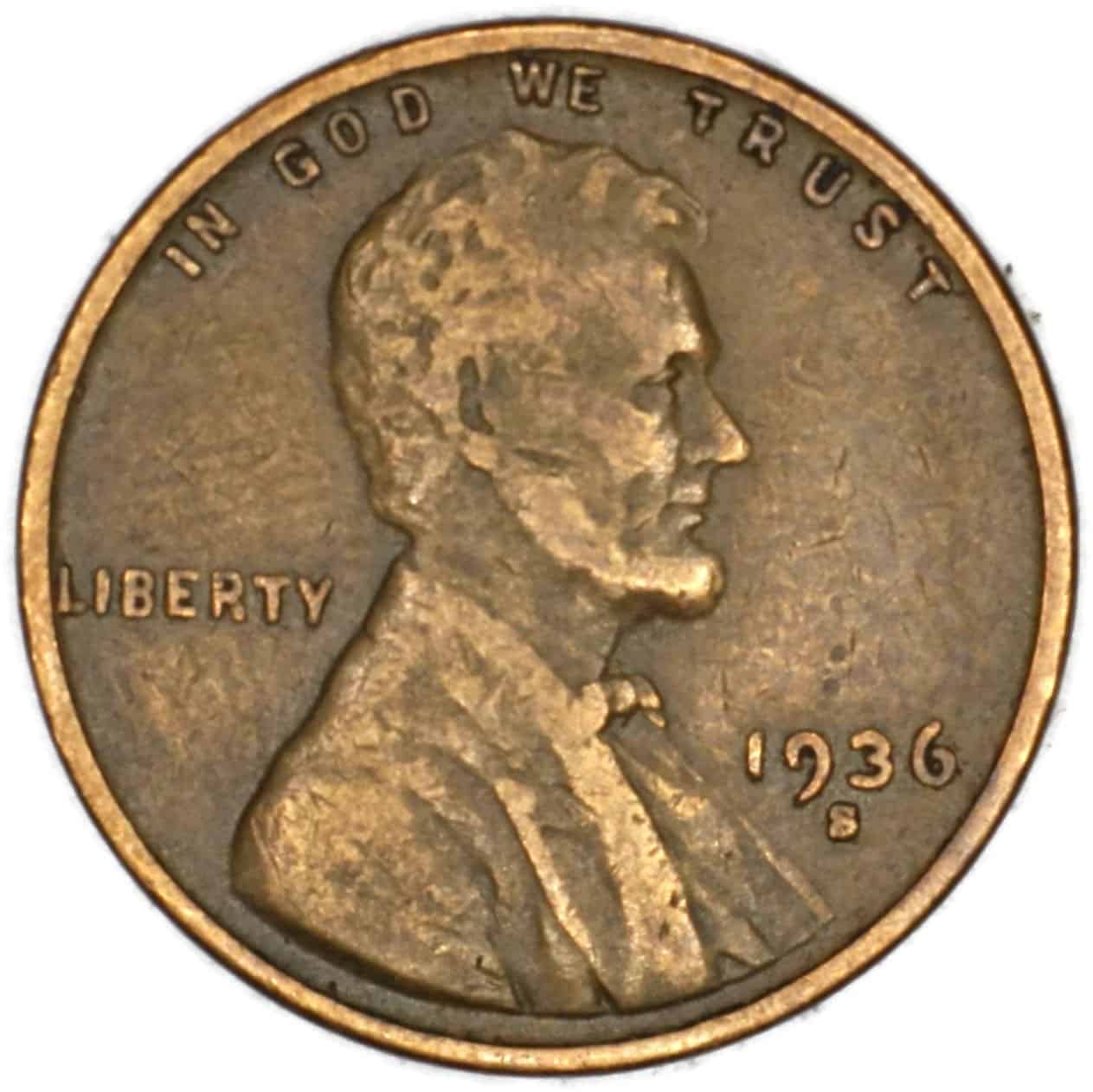
If you have a penny from 1936, it could be worth more than its face value. However, age does not automatically add value to coins, so how do you know the 1936 wheat penny value? The value of an old coin depends on many factors including its condition, how rare it is, and if it has errors that make it more desirable for collectors and therefore more valuable.
Continue reading to find out what wheat pennies from 1936 can be worth and how professionals estimate their value.
1936 Wheat Penny Value Chart |
||||
| Mint Mark | Good – G4 | Fine – F12 | Extremely Fine – EF40 | Mint State – MS63 |
| 1936 No Mint Mark Wheat Penny Value | $0.17 | $0.28 | $1.71 | $11 |
| 1936 D Wheat Penny Value | $0.17 | $0.33 | $1.13 | $5.70 |
| 1936 S Wheat Penny Value | $0.17 | $0.45 | $1.13 | $7.88 |
| 1936 No Mint Mark DDO Wheat Penny Value | $28 | $80 | $227 | $2,524 |
The 1936 wheat pennies are part of the series that featured the two ears of wheat on the reverse and a portrait of Lincoln on the obverse. The first pennies with the portrait of Lincoln were released into circulation in 1909.
Before the first Lincoln pennies were minted in 1909, it had not been seen as acceptable to use images of real people on money in the United States. Coins before 1909 featured symbolic figures such as the Lady Liberty or the portrait of an Indian Chief which was a composite portrait of three different Native American chiefs.
The policy of not using real people was changed to commemorate 100 years since the birth of President Lincoln. The portrait used on the coin was designed by the artist and sculptor Victor David Brenner.
Initially, Brenner placed his whole last name on the coin, but the Mint Director was not happy with this, and Brenner swapped it for his initials. However, some mint officials, the media, as well as the public objected to them and they were removed until 1918. On the 1936 coin, they can be seen on the obverse of the coin at the shoulder cut-off.
1936 No Mint Mark Wheat Penny Value
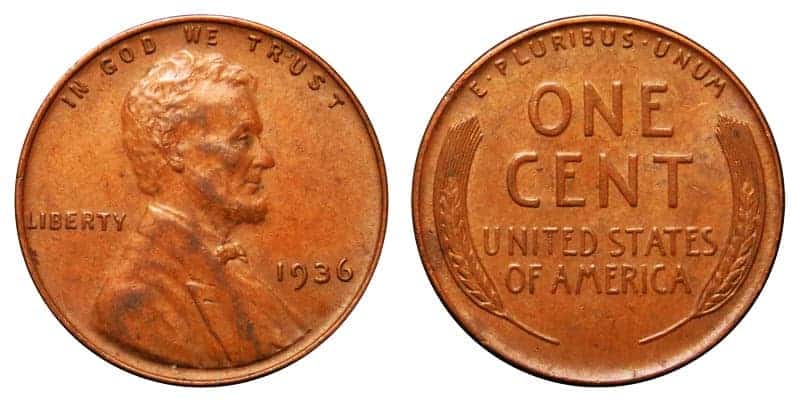
There were 309,632,000 wheat pennies minted at the Philadelphia Mint in 1936. You can tell pennies minted at Philadelphia from the absence of the mint mark, hence they are referred to as “no mint mark” wheat pennies. You can find details on where to look for the mint mark a little later in the article.
Because there were over 300 million no-mint mark wheat pennies minted in 1936, coins that have been in circulation are not considered rare. 1936 wheat pennies in good condition are only worth $0.17 and MS63-graded specimens generally sell for around $11.
However, there are always exceptions. For the 1936 no-mint mark wheat penny these include the AU58BN graded coin that sold for $920 in 2001 and the MS69RD 1936 wheat penny that sold for $16,620 in 2022. Both were auction records for their grading and type.
1936 Proof Pennies
In 1936, the Philadelphia Mint produced proof pennies as well as pennies intended for circulation. Proof pennies are struck at least twice, and minted with specially polished dies. The blanks used for proof coins are also specially treated and hand-polished to ensure a high-quality finish.
The value of a 1936 no-mint mark proof penny graded at PR63 is $227. However, proof coins have fetched a lot higher prices at auctions. For example, a satin finish-proof coin graded PR66 sold for $18,250 at an auction in 2022.
Proof Penny Grading
Since proof pennies were never intended for circulation and most were bought by collectors who have kept them in a good condition, they cannot be valued on the same scale as circulated coins.
When professional graders value proof coins, they will use the letters PR in the grading. The value of a proof coin depends not just on its overall condition, but also on its cameo rating. Deep cameo coins are the most valuable proof coins. They can be identified from the very deep contrast between the design details and the reflective surface of the coin.
1936 D Wheat Penny Value
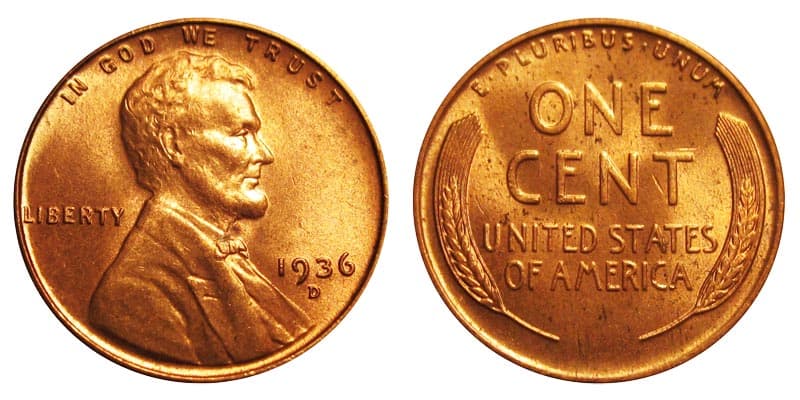
In 1936, 40,620,000 pennies were minted at the Denver Mint and they can be identified by their mint mark D. Even though there were fewer coins minted at Denver compared to Philadelphia, the coins are not considered rare. D-minted 1936 pennies are not valued as high as no-mint mark pennies, even at the higher grades.
For example, MS65-graded 1936 D wheat pennies are generally worth around $20 only. However, there are exceptions and at the right auction, D minted 1936 wheat pennies can still sell for hundreds and sometimes thousands of dollars.
In 2003, at a Heritage Auctions sale, MS60BN graded 1936 D wheat penny sold for $978, which was the auction record for a D minted 1936 wheat penny with this grading. The overall auction record for 1936 D-minted pennies belongs to a specimen graded as MS67RD, which sold for $4,230 in 2016 also at a Heritage Auctions sale.
BN, RB, and RD Grading
You will probably have noticed the letters BN and RD used in the auction record-breaking coins’ descriptions. These letters refer to the color of the coin. The 1936 wheat pennies were made with 95% copper and 5% of zinc and tin.
It is the copper that gives the coins their color. When the copper is fresh and not exposed to oxygen, it is red. As it ages, it will be affected by oxygen and its color will change to brown. Coins that are at least 95% red are graded RD and 95% brown BN. Coins in between will be graded RB for red-brown. The RD coins are the most valuable.
The Obverse Design of the 1936 Wheat Penny
The obverse of the 1936 wheat penny has a portrait of former American president Abraham Lincoln. It is because of this portrait that these coins are sometimes called Lincoln pennies or Lincoln wheat pennies.
The portrait faces to the right and the minting date is in front of it. On Denver and Philadelphia minted pennies, the mint mark, capital D, is just below the date. The word LIBERTY is behind and the phrase IN GOD WE TRUST is above the portrait.
The Reverse of the 1936 Lincoln Penny
On the reverse, the central part of the coin is dominated by the denomination ONE CENT in large capitals. Below the domination is the country name UNITED STATES OF AMERICA and above it is the Latin phrase E PLURIBUS UNUM.
The two ears of durum wheat, which is where the coin gets its name, curve along the edges on both sides of the coin. 1936 wheat pennies have plain edges, which means there is no reeding. The coin has a diameter of 19.05 millimeters and it weighs 3.11 grams.
1936 S Wheat Penny Value
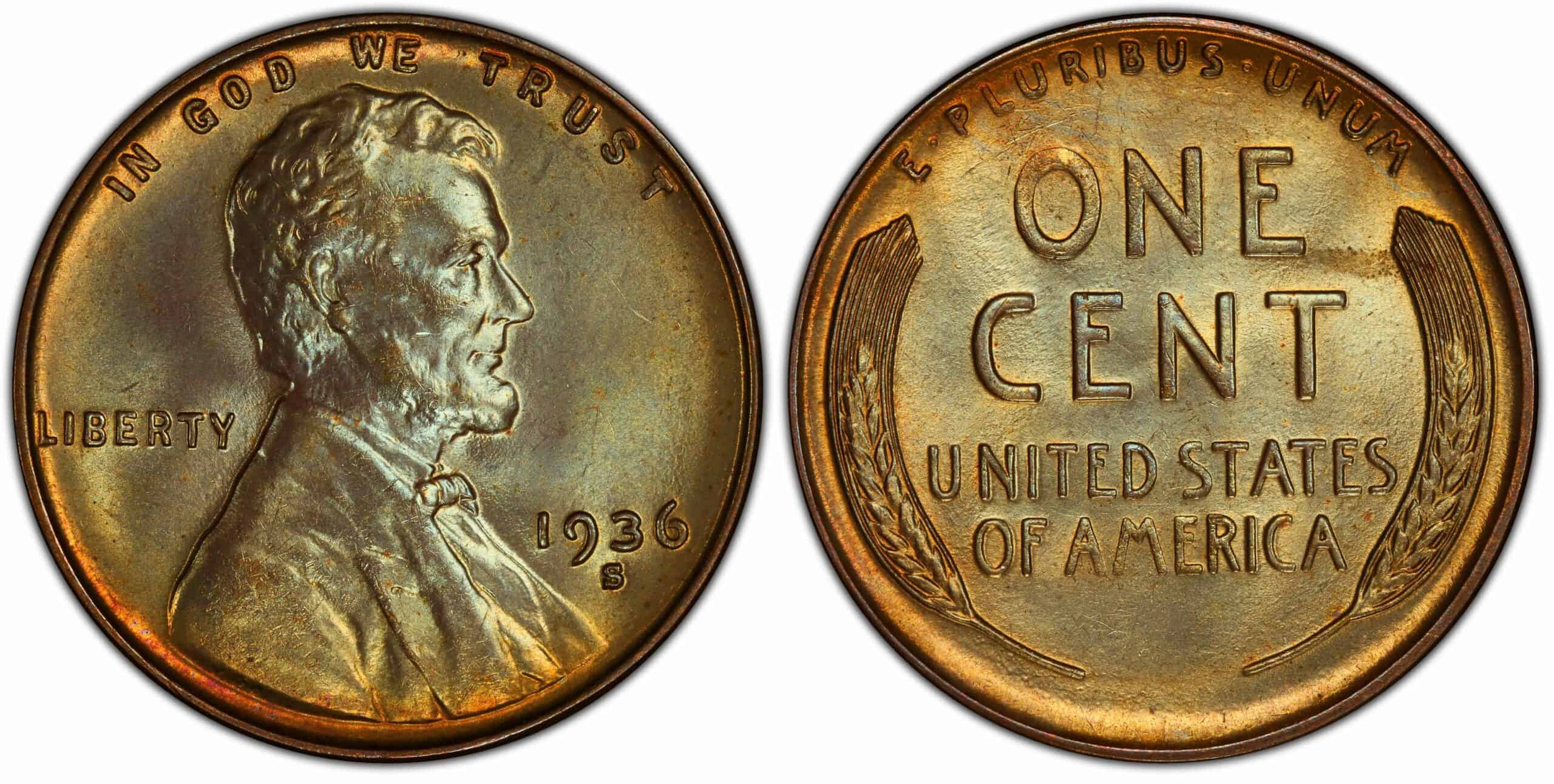
To check if you have a 1936 penny minted in San Francisco, look for the mint mark S. There were 29,130,000 coins minted in the San Francisco mint in 1936 so they are less numerous than either no mint mark or D minted coins from the same year.
Despite the lower mintage, there are many known mint state 1936 S pennies, so they are not particularly valuable. For example, MS63-graded pennies are valued at just under $8. However, this does not mean that they cannot sell for more. The auction record for a 1936 S wheat penny graded MS65BN is $204 and an MS67RD S penny from 1936 sold for $5,060 at a 2004 auction.
1936 No Mint Mark DDO Wheat Penny Value
The letters DDO stand for doubled die obverse. This is a relatively common error that occurs during the minting process when the die shifts between strikes. While pennies from many other mintage years with the same error are not valued much higher than regular strike coins, the pennies from 1936 with DDO error can sell for more.
It is not known how many pennies with a doubled die error on the obverse were struck in 1936. To check if your 1936 penny has this error, look for a doubling, or in some cases tripling or even quadrupling, on the words and numbers on the obverse side.
There are three different varieties of the doubled die error on the obverse of the 1936 wheat pennies. In most cases, these errors will be hard to spot with the naked eye, so if you have a no-mint-mark wheat penny from 1936, you might like to check for the doubled die error with a magnifying glass.
If you were in possession of a DDO wheat penny from 1936, you could be looking at selling it for several thousands depending on its overall condition. A MS63BN graded DDO wheat penny from 1936 sold for $2,875 in 2012, while a 1936 no mint mark DDO wheat penny graded MS66RD sold for $19,378 at a 2007 auction.
1936 Wheat Penny Grading
Before coins are sold, for example, at an auction, they are graded by a professional grading service that will give the coin a grading from one to seventy. The lowest grade is PO1 and coins in this condition are, in most cases, only worth their face value. The grading then moves to coins graded good, fine, extremely fine, and about uncirculated.
When a coin is given an uncirculated grading, it means it is almost as good as a mint state coin. Mint state grading is given to coins meant for circulation that have stayed in excellent condition and show no or very minimal signs of aging. Mint state grades range from 60 to 70 and MS70 is only given to coins in perfect condition.
Since it can be difficult to distinguish between uncirculated and mint state coins, this video can help you determine which grade your 1936 wheat penny could be graded as.
Rare 1936 Wheat Penny Error Lists
1936 No Mint Mark Wheat Penny DDO Error
This is the best-known error on the 1936 wheat penny and, as mentioned above, can significantly increase the coin’s value. There are three known variations of this error, which are known as FS-101, FS-102, and FS-103. The FS stands for the first strike.
The first type shows doubling on the words Liberty and We. The second type shows doubling on the date. It can be seen on the lower left parts of the numbers. The final variation shows doubling on the word GOD and the letters R and U in the word TRUST.
1936 Wheat Penny Off-Center Error
Sometimes the coin is not placed correctly in the coin machine or it moves during the minting process. As a result, the image is not struck in the center of the coin. These errors are referred to as off-center errors.
The off-center error can be very slight or very obvious ranging from 1% to 99%. Coins with a fully visible date with 50% off-centering are often valued at around $100. Coins with a 5% to 10% error are worth only slightly more than regular struck coins with no error.
1936 Wheat Penny Die Crack Error
As the die used to strike the coins ages, it can crack and the imperfection is then transferred to the coins during the minting process. On the 1936 wheat pennies, the die crack has created a visible vertical line between the letters B and I on the word LIBERTY, making it look like LIBIERTY. Coins with this error are valued from $10 upwards.
1936 Wheat Penny Frequently Asked Questions
Why is the 1936 penny rare?
Regular-strike pennies from 1936 that have been in circulation are not considered rare. However, 1936 no-mint mark pennies with the DDO error are far less common and can be worth significantly more than their face value. Coins with high MS grades are also rare and worth more money.
How much is a 1936 wheat penny with no mint mark?
The valuation of a 1936 no-mint mark wheat penny depends on its overall condition. Coins that are in good condition, for example, G4-graded coins are only worth around $0.17. However, high-grade coins have been known to sell for thousands.
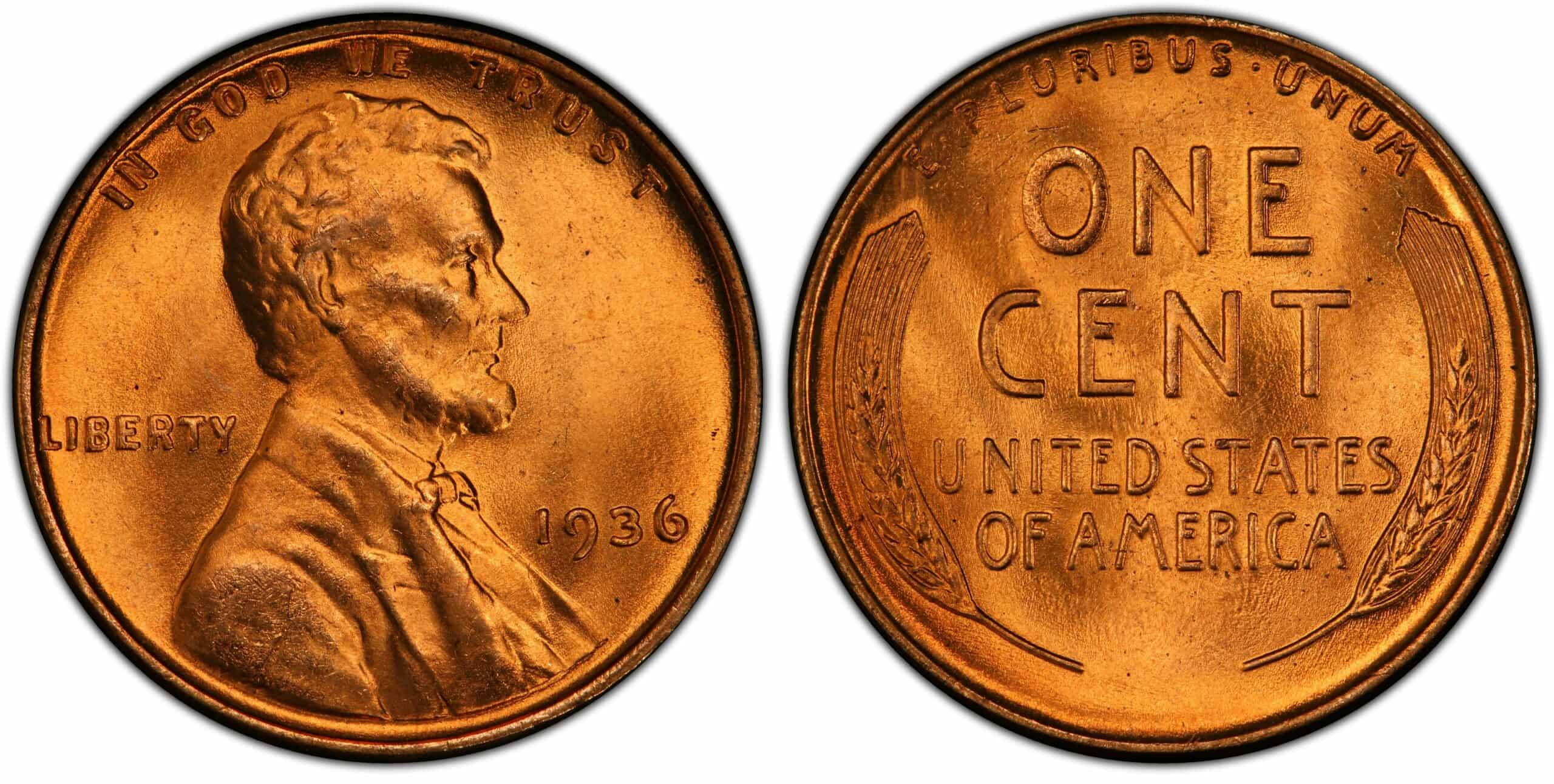
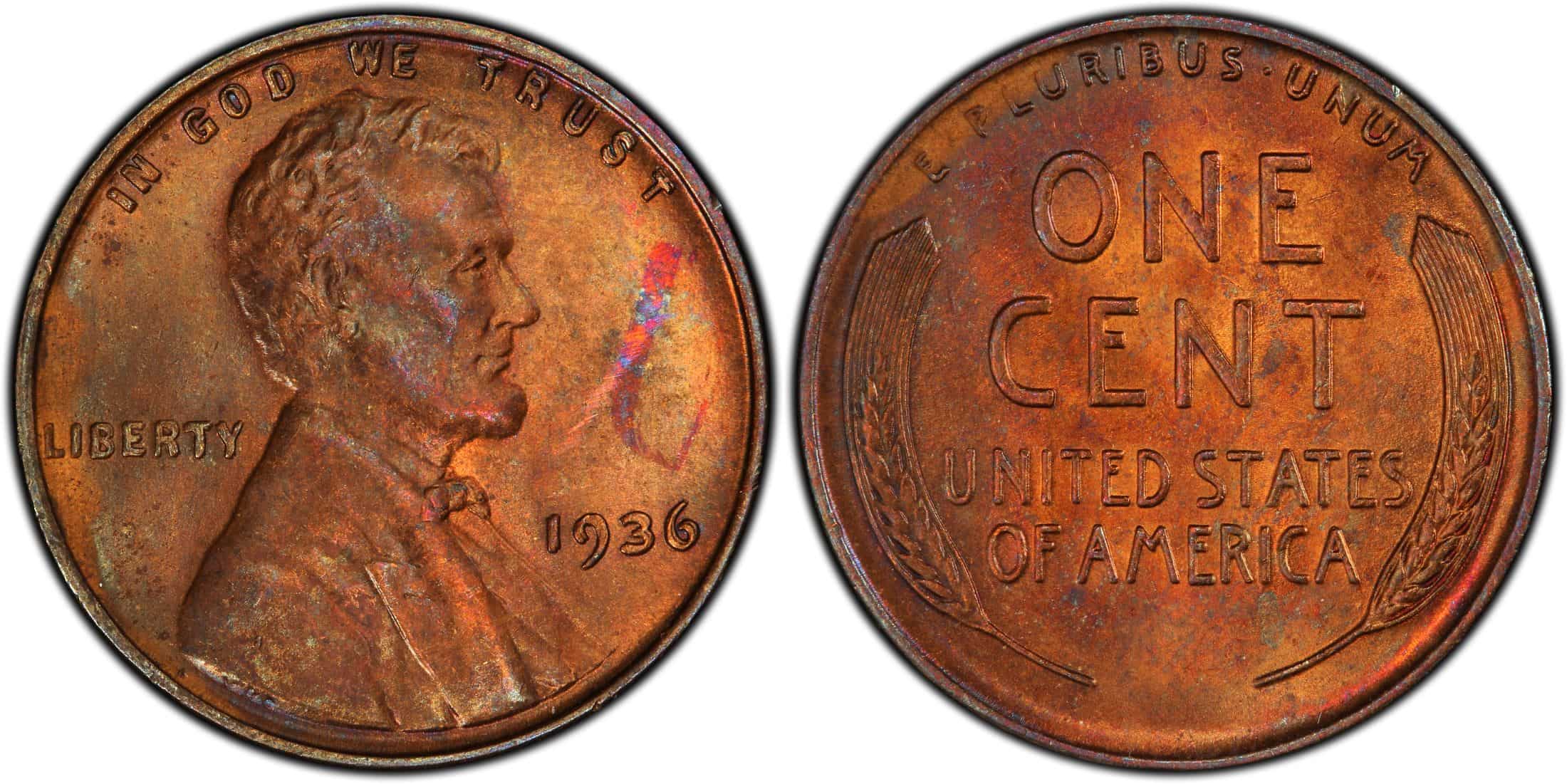
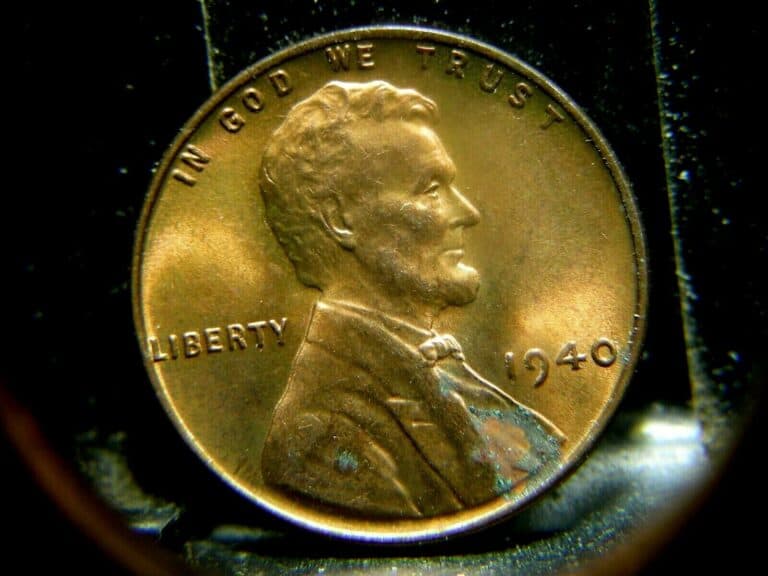

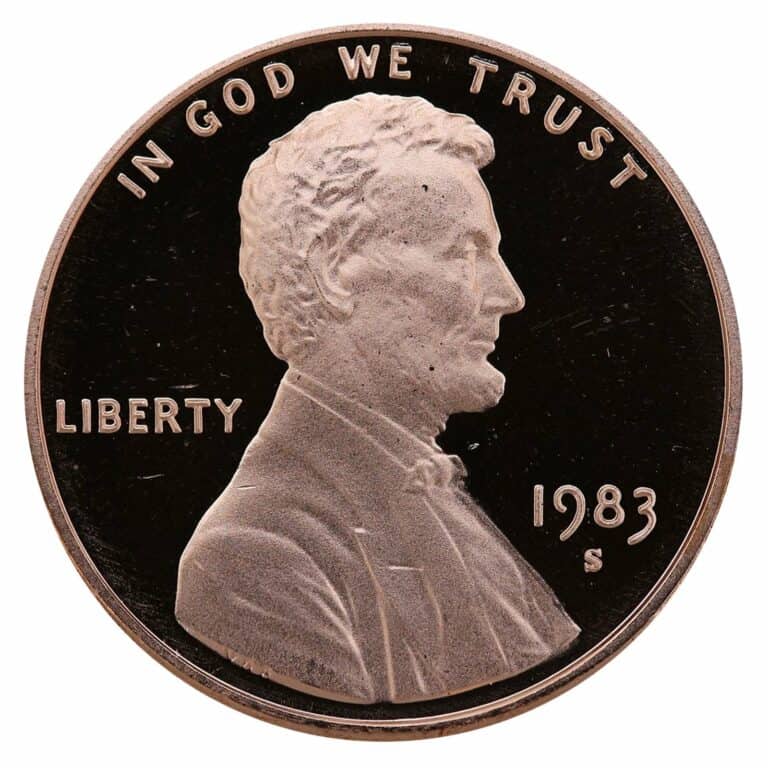
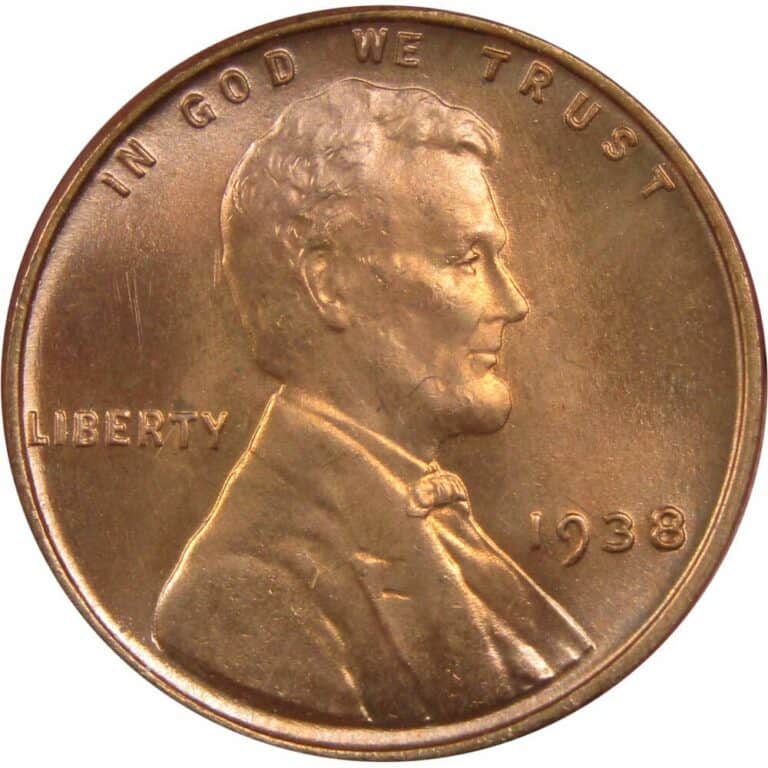
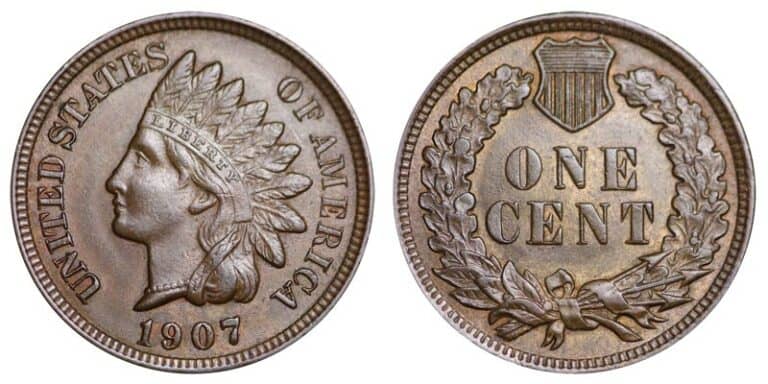
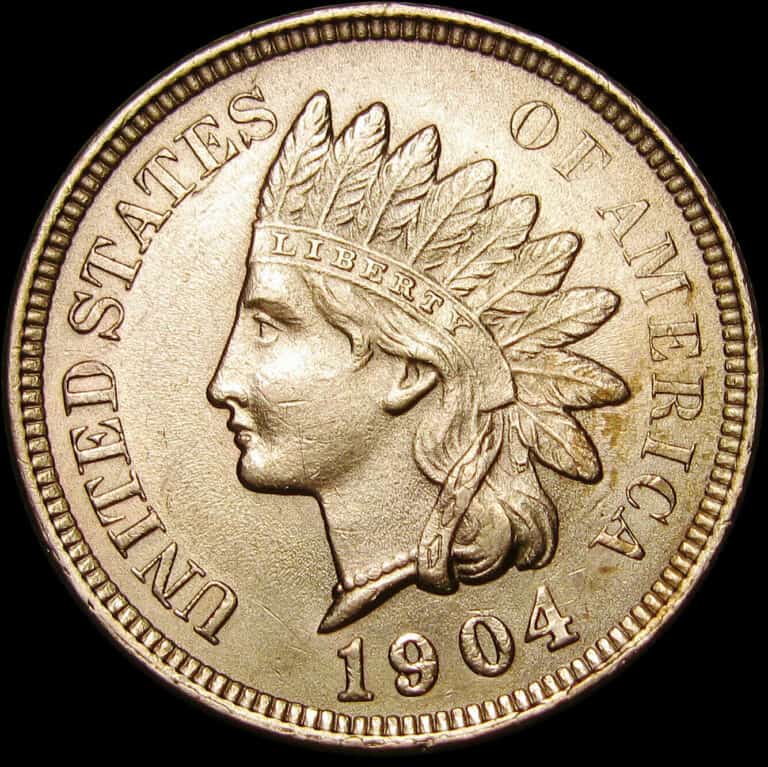
Would ibe able to se d you a pic 0f a 1936 Lincoln penny no mint mark..your opinion would greatly satisfy my guesswork.